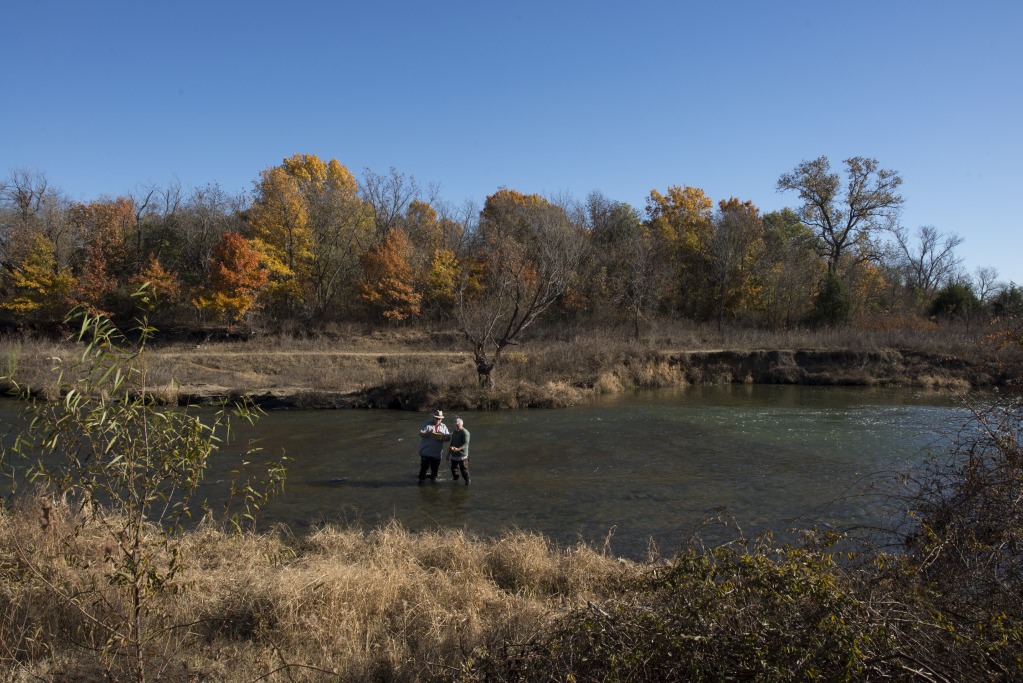Facilities
LEWISVILLE LAKE ENVIRONMENTAL LEARNING AREA (LLELA)

Now in its 18th year, the Lewisville Lake Environmental Learning Area (LLELA), which
sits just south of Lewisville Lake on about 2,100 acres, is a living lab perfect for
scientific research and environmental education purposes and provides unique opportunities
for hands-on training with its vast prairieland, array of animals and diversity of
waterways, including the Elm Fork of the Trinity River.
UNT'S LIVING CLASSROOM AND LAB
Ecological research is a fundamental part of the mission at LLELA. For more than a decade UNT students and faculty have conducted a variety of research projects at LLELA, many of them resulting in master's theses and doctoral dissertations. In addition, scientists from Texas A&M University, University of Texas at Arlington, University of Texas at Austin, Rice University, and others also have completed field studies and research projects at LLELA.
UNT'S LIVING CLASSROOM AND LAB
Ecological research is a fundamental part of the mission at LLELA. For more than a decade UNT students and faculty have conducted a variety of research projects at LLELA, many of them resulting in master's theses and doctoral dissertations. In addition, scientists from Texas A&M University, University of Texas at Arlington, University of Texas at Austin, Rice University, and others also have completed field studies and research projects at LLELA.
THE POLLINATIVE PRAIRIE

The Pecan Creek Pollinative Prairie is a native North Central Texas tallgrass prairie
reconstruction project located on four acres of the east field at the University of
North Texas Discovery Park Campus. In May 2016, UNT Ecology staff and students initiated
the project to provide a space for students, faculty, and staff on the UNT Campus
to promote conservation and sustainable urban landscaping of native habitats for declining
pollinator populations, such as the American Bumblebee and Monarch Butterfly. During
2016 - 2018, over 300 undergraduate students volunteered approximately 900 hours to
turn a field dominated by invasive Bermuda grass with little life into a vibrant prairie
with native flowers, grasses, and pollinating insects. In October of 2019, hundreds
more students helped plant over 1,000 native prairie plants to help further establish
the prairie into a healthy living habitat. As of 2020, over 450 different species
have been documented in the prairie which was once a field of invasive Bermuda grass
which offered little to no habitat value for the many species we see now. We even
have a breeding pair of American Kestrel falcons that call the prairie home! Now,
we are working to build the rest of the prairie and create a space to walk, rest,
and discover peace with nature.
WATER RESEARCH FIELD STATION AND ARTIFICIAL STREAM FACILITY

The Water Research Field Station (WRFS) and the Artificial Stream Facility are two
of the few facilities in the nation designed to assess, under field conditions, the
effects of new chemicals and pesticides on aquatic ecosystems prior to their use in
the general environment. The Water Research Field Station consists of 48 aquatic testing
ponds of 0.1 acre each and 52 1,000- and 10,000-liter microcosms. The Artificial Stream
Facility has 12 replicate five-meter streams, each capable of being colonized by aquatic
species. The WRFS is specifically designed to assess the impacts of agrichemicals
on aquatic populations and communities before they are used in the general environment.
The field station and stream facility are supported on campus by a biological and
residue analysis laboratory with state-of-the-art equipment such as computer interfaced
gas chromatographs.